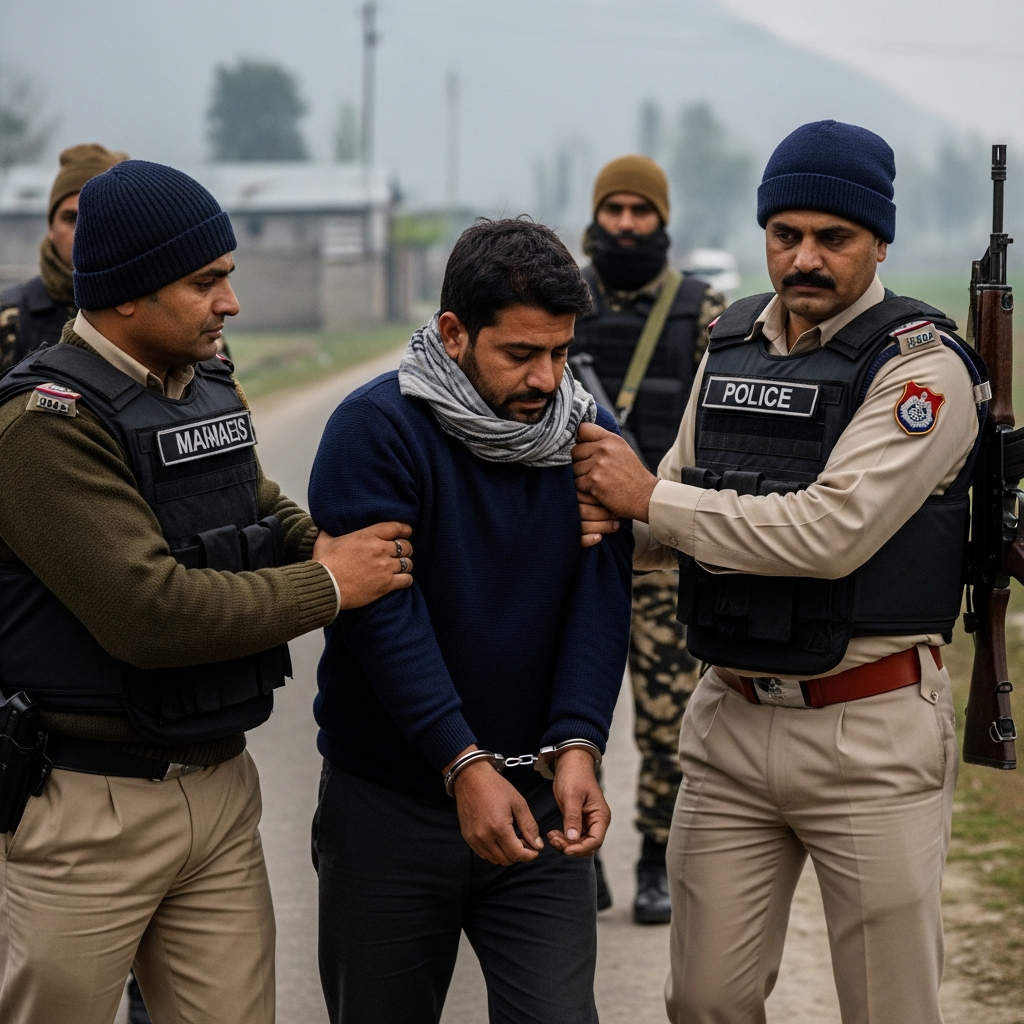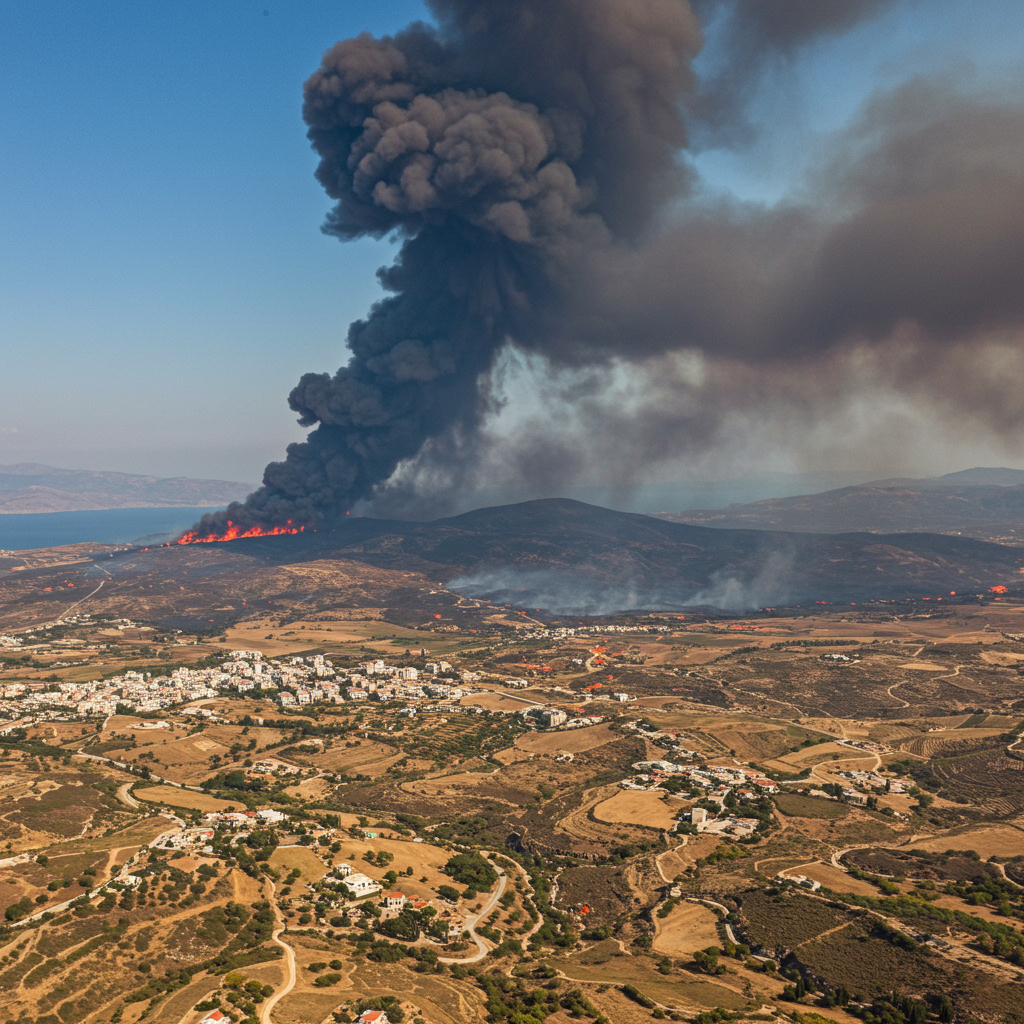The National Investigation Agency (NIA) has announced a major breakthrough in the investigation of a devastating car bomb attack that rocked New Delhi last week. Indian authorities confirmed the arrest of a suspect from Kashmir, believed to be a crucial link in the deadly terror plot. This high-profile incident, declared a “terrorist act” by the Indian government, resulted in a significant loss of life and renewed concerns over urban security in the heavily guarded capital.
Shockwaves in the Capital: The Delhi Car Explosion Unveiled
On Monday, November 12, 2025, at approximately 18:52 local time, a powerful explosion tore through an area near Delhi’s iconic Red Fort, sending shockwaves across the nation. A slow-moving white Hyundai i20 reportedly detonated at a busy traffic signal close to a metro station, transforming the vibrant street into a scene of chaos and destruction. Reports from Al Jazeera indicate the blast tragically claimed 12 lives and left 32 individuals injured, while other sources reported 8 fatalities and 20 injuries, underscoring the immediate and devastating impact.
Eyewitness accounts painted a grim picture, with one remarking, “There was blood everywhere.” The blast gutted several other vehicles, including auto-rickshaws and cycle-rickshaws, leaving behind charred debris and a profound sense of horror. The incident marked a concerning escalation, being the first such major explosion in Delhi since 2011, highlighting renewed vulnerabilities in the capital’s security apparatus.
The Historic Red Fort: A Symbolic Target
The choice of location for this heinous attack carries significant symbolic weight. The blast occurred in close proximity to the Red Fort, a magnificent 17th-century Mughal fortress that stands as a UNESCO World Heritage site. This historical landmark draws thousands of tourists daily and serves as the backdrop for the Prime Minister’s annual Independence Day speeches, embodying India’s rich heritage and sovereignty. Targeting such a prominent and symbolically charged area amplifies the gravity of the attack, suggesting a deliberate attempt to undermine national confidence and stability.
Breakthrough in the Investigation: Suspects Identified
Just days after the devastating explosion, India’s federal anti-terror agency, the National Investigation Agency (NIA), made a crucial announcement. On Sunday, November 16, 2025, the NIA confirmed the arrest of Amir Rashid Ali in Delhi. Ali, a resident of Pampore in Indian-administered Kashmir, is accused of playing a pivotal role in the conspiracy behind the car bomb attack.
Investigators revealed that the white Hyundai i20 used as a “vehicle-borne Improvised Explosive Device” (VBIED) was registered in Ali’s name. Authorities believe Ali traveled to Delhi specifically to facilitate the purchase of this vehicle, which was then packed with explosives. The NIA further identified Umar Un Nabi, a resident of Pulwama district in south Kashmir, as the alleged suicide bomber who perished in the explosion. Local media, referencing investigative sources, suggested that Nabi, identified as a doctor, may have had connections to Islamic militants based in Pakistan.
Meticulous Probe: Unearthing the Conspiracy
The NIA’s investigation has been both extensive and meticulous. To date, the agency has interrogated a staggering 73 witnesses, including some of those who sustained injuries in the blast. This thorough approach aims to piece together every detail of the plot, from its inception to execution. In a further development, authorities seized another vehicle believed to belong to Umar Un Nabi for forensic examination, hoping to uncover additional evidence and linkages. The ongoing probe seeks to identify all individuals involved in planning, collaborating, and sponsoring this significant act of terrorism.
Government’s Firm Stance and Cautious Diplomacy
In the immediate aftermath of the explosion, the Indian government swiftly categorized the incident as a “terror incident” and a “heinous terror act perpetrated by anti-national forces.” Prime Minister Narendra Modi publicly denounced the attack as a “conspiracy” and vowed that his government would bring all “perpetrators, their collaborators and their sponsors” to justice with the utmost speed. Opposition leader Rahul Gandhi also expressed profound sorrow, describing the news as “extremely heartbreaking.”
Notably, despite the strong condemnation, the government exercised caution in directly assigning blame to archrival Pakistan. This measured response is particularly significant given Prime Minister Modi’s earlier statement in May, where he declared that any future “terror” attack would be considered an “act of war.” This stance potentially limits India’s ability to easily blame alleged perpetrators without escalating expectations of another conflict with Pakistan, reflecting a complex diplomatic landscape.
Broader Context and Lingering Security Concerns
The Delhi car explosion unfolds against a backdrop of heightened security concerns and recent counter-terrorism activities in the region. Police are actively exploring potential connections between this blast and other recent developments, including the arrest of seven men in Indian-administered Kashmir and the significant seizure of 2,900kg of explosives from a Delhi suburb. These parallel investigations suggest a concerted effort to disrupt wider terror networks.
Adding to the complexity, a separate incident occurred in Srinagar, Indian-administered Kashmir, on November 14, 2025. Nine people were killed and nearly 30 injured when a cache of confiscated explosives detonated inside a police station. While regional police swiftly ruled this an accident, explicitly stating no armed groups were involved, such events underscore the volatile security environment in the region. The Delhi blast, therefore, is not an isolated incident but part of a larger, ongoing struggle against militancy and extremism. The meticulous investigation by the NIA and the high-level political reactions highlight the seriousness with which the Indian government is approaching this grave security breach.
Frequently Asked Questions
What exactly happened in the Delhi car explosion and who were the key figures involved?
On November 12, 2025, a white Hyundai i20 detonated near Delhi’s Red Fort, killing 12 people and injuring 32. India’s National Investigation Agency (NIA) arrested Amir Rashid Ali from Kashmir, accusing him of facilitating the car’s purchase. Umar Un Nabi, also from Kashmir and identified as a doctor, is believed to be the suicide bomber who drove the vehicle. The government has officially classified the incident as a terror attack, marking it as the first major explosion in the capital since 2011.
Why is the location of the Delhi car blast, near the Red Fort, considered significant?
The blast’s proximity to the Red Fort holds immense symbolic importance. As a UNESCO World Heritage site and the backdrop for India’s Independence Day speeches, the Red Fort represents Indian sovereignty and history. Targeting such a prominent and heavily guarded landmark suggests a deliberate motive to create a high-impact, politically charged event, aiming to instill fear and undermine national confidence in a highly visible manner.
What steps are authorities taking following the Delhi terror attack and what are the broader security implications?
Authorities, led by the NIA, are conducting a comprehensive investigation, interrogating 73 witnesses and seizing additional vehicles for forensic examination. The Indian government has vowed swift justice and increased vigilance. This incident highlights ongoing security challenges, particularly given its historical context as the first major blast in Delhi since 2011. It also sparks concerns about potential connections to broader militant networks and the continuous need for robust counter-terrorism measures across the nation.
Conclusion: Vigilance in the Face of Terror
The arrest in connection with the deadly Delhi car explosion marks a critical step forward in uncovering the full scope of this heinous terror plot. While significant progress has been made in identifying key perpetrators, the extensive investigation continues, seeking to unmask all collaborators and sponsors. The attack near the historic Red Fort serves as a stark reminder of the persistent threats faced by nations and the unwavering resolve required to counter them. As India grapples with the aftermath, the emphasis remains on heightened security, meticulous intelligence gathering, and a firm commitment to bringing justice to the victims and their families. The vigilance of security forces and the collective resilience of the nation will be crucial in preventing future such acts and upholding peace and stability.




